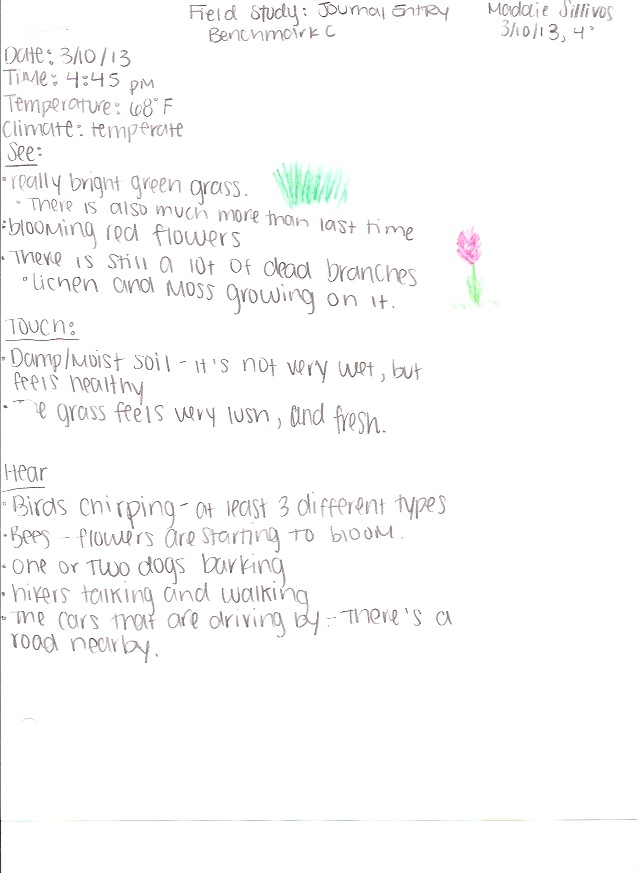Tuesday, May 28, 2013
Sunday, May 19, 2013
Checkerspot Butterfly
The Checkerspot Butterfly is also a native species, however it is endangered and only found at Edgewood Park. Their natural habitat is in grasslands, which are currently being destroyed by humans. There are also other species of grasses that limit the growth of a specific type of nectar flower that the butterfly's depend on.
Source:
"Edgewood Park & Natural Preserve." San Mateo County - Department of Parks - Edgewood Park & Natural Preserve. N.p., n.d. Web. 20 May 2013.
"Creekside Center for Earth Observation." Creekside Center for Earth Observation. N.p., n.d. Web. 20 May 2013.
Source:
"Edgewood Park & Natural Preserve." San Mateo County - Department of Parks - Edgewood Park & Natural Preserve. N.p., n.d. Web. 20 May 2013.
"Creekside Center for Earth Observation." Creekside Center for Earth Observation. N.p., n.d. Web. 20 May 2013.
Native Species
Some species that are native to my study area are:
- white tailed deer
- squirrels
- coyote
- bobcat
- racoon
source:
"Edgewood Park & Natural Preserve." San Mateo County - Department of Parks - Edgewood Park & Natural Preserve. N.p., n.d. Web. 20 May 2013.
Friday, May 17, 2013
Seasonal Trends
There were many seasonal trends that I noticed
in my field study area. For example during winter the moss was a much more
vibrant shade of green than during fall or spring. This is because there is
more rain for the moss, and less heat to dry it out. I also noticed that there
were more flowers, specifically the Indian Warrior flower, blooming in the
springtime because that is the typical flower season.
Abiotic and Biotic Connections
I have learned that there are many connections
between the abiotic and biotic factors in my study area. The main connection is
between the temperature and the type of grasses growing in my study area. The
temperature is typically high and dry in the woodland area of Edgewood park.
Because the temperature is relatively high it is really only suitable for dry
grasses. In my study area there is an abundance of dry grasses due to the high
temperature and dry climate.
Human Impact
There are many impacts caused by humans in my
study area. The main impact is from hikers walking on the trail. I noticed that
there was very little plant life in my study area where it met with the trail.
This is due to the humans who walk on the trail by my study area. Because so
many people walk by and probably step on the edge of the trail if multiple people
were walking by could’ve slowly destroyed plant life. These plants could’ve
adapted to the low survival rate and began to grow farther away from the trail.
Adaptations: White-Tailed Deer
The White Tailed Deer is native to Edgewood Park
– although they may not be seen often. The three main adaptations that they
have include their antlers, fur and white tail. The antlers allow protection
for the male deer who can “head-but” their predators, which increases their
chance of survival. Similarly, the white tail serves as a warning sign to other
deer when predators are nearby. The deer simply lifts its tail up so that
others can see the white, which warns them of danger. Another important adaptation
that the White-Tailed Deer has is their fur. In the summertime the deer’s fur
is very light and thin so that they don’t overheat. However in the winter their
fur becomes very thick so that they can keep warm in the cold weather. The
White-Tailed Deer has a symbiotic relationship, specifically parasitism, with
the deer tick. In this relationship the deer tick lives on the deer and gets
blood as food without killing the deer.
Taylor, Clay. "Bird Watcher's Digest Presents." Bird Watcher's Digest. N.p., n.d. Web. 18 May 2013.
(not my image)
Bibliography:
"WHITE-TAILED
DEER." - Adaptations. N.p., n.d. Web. 12 May 2013.
"Relationships
Page." Relationships Page. N.p., n.d. Web. 12 May 2013.
Subscribe to:
Comments (Atom)



















